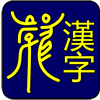Languages or dialects?
The different varieties of Chinese are known as 方言 (fāngyán), which is translated as 'regional languages', 'toplects', 'dialects' or 'varieties'. The English term dialect normally refers to more or less mutually intelligible varieties of a single language, though the distinction between dialects and languages is often for sociological and political reasons rather than linguistics ones. Chinese people generally refer to Chinese as a single language with a number of different dialects or varieties. As there is little mutual intelligiblity between the different varieties of Chinese and as a result, some non-Chinese linguists refer to them as separate languages.A distinction is made in Chinese between spoken and written language. In China the written form of Chinese, which is perceived as being uniform throughout the country is referred to as 中文 (zhōngwén), while the terms 语 [語] (yǔ) or 话 [話] (huà) are used in the names of spoken varities of Chinese, e.g. Mandarin Chinese is known as 汉语 [漢語] (hànyǔ) = "Han language", or 普通话 [普通話] (pǔtōnghuà) = "common language" in China. elsewhere it is refered to as 国语 [國語] (guóyǔ) = "national language" or 华语 [華語] (huáyǔ) = "Chinese language". The word 汉 [漢] (hàn) is used to refer to the Chinese people and comes from the Han Dynasty (206 BC - 220 AD).
Spoken Chinese
Chinese belongs to the Sinitic or Chinese branch of Sino-Tibetan language family. The modern varieties of Chinese all descended from Middle Chinese (中古汉语 [中古漢語]), which was spoken in China between about the spoken during Southern and Northern Dynasties and the Sui, Tang, and Song dynasties (c. 5th - 12th centuries AD), and which developed from Old Chinese (上古汉语 [上古漢語]), which was spoken during the Shang and Zhou Dynasties and the Warring States Period (c. 1600-256 BC).Varieties of spoken Chinese are traditional grouped into the following major groups:
- Guan / Mandarin (官话 [官話] guānhuà)
- Wu (吴语 [吳語] ng1nyiu2)
- Yue (粤语 [粵語] yuhtyúh)
- Min (闽语 [閩語] bân-gú / mìng-ngṳ̄)
- Hakka (客家话 [客家話] hak7ga1wa3)
- Xiang (湘语 [湘語] xiāngyǔ)
- Gan (赣语 [贛語] gànyǔ)
Written Chinese (中文)
The main written form of Chinese is based mainly on the Mandarin spoken by educated people in Beijing.
Omniglot Chinese
learn to read, write and pronounce Chinese characters
Available for
Android & iPhone
More information about Written Chinese
 Recommended books
Recommended books
Books about Chinese characters and calligraphyLanguage learning materials for: Classical Chinese, Mandarin, Shanghainese, Hokkien, Taiwanese and Cantonese
Semanto-phonetic writing systems
Akkadian Cuneiform, Ancient Egyptian (Demotic), Ancient Egyptian (Hieratic), Ancient Egyptian (Hieroglyphs), Chinese, Chữ-nôm, Cuneiform, Japanese, Jurchen, Khitan, Linear B, Luwian, Mayan, Naxi, Sumerian Cuneiform, Tangut (Hsihsia)Learn to speak Mandarin Chinese confidently and naturally with Rocket Chinese
Learn Chinese online with ChineseClass101
No comments:
Post a Comment
Note: Only a member of this blog may post a comment.